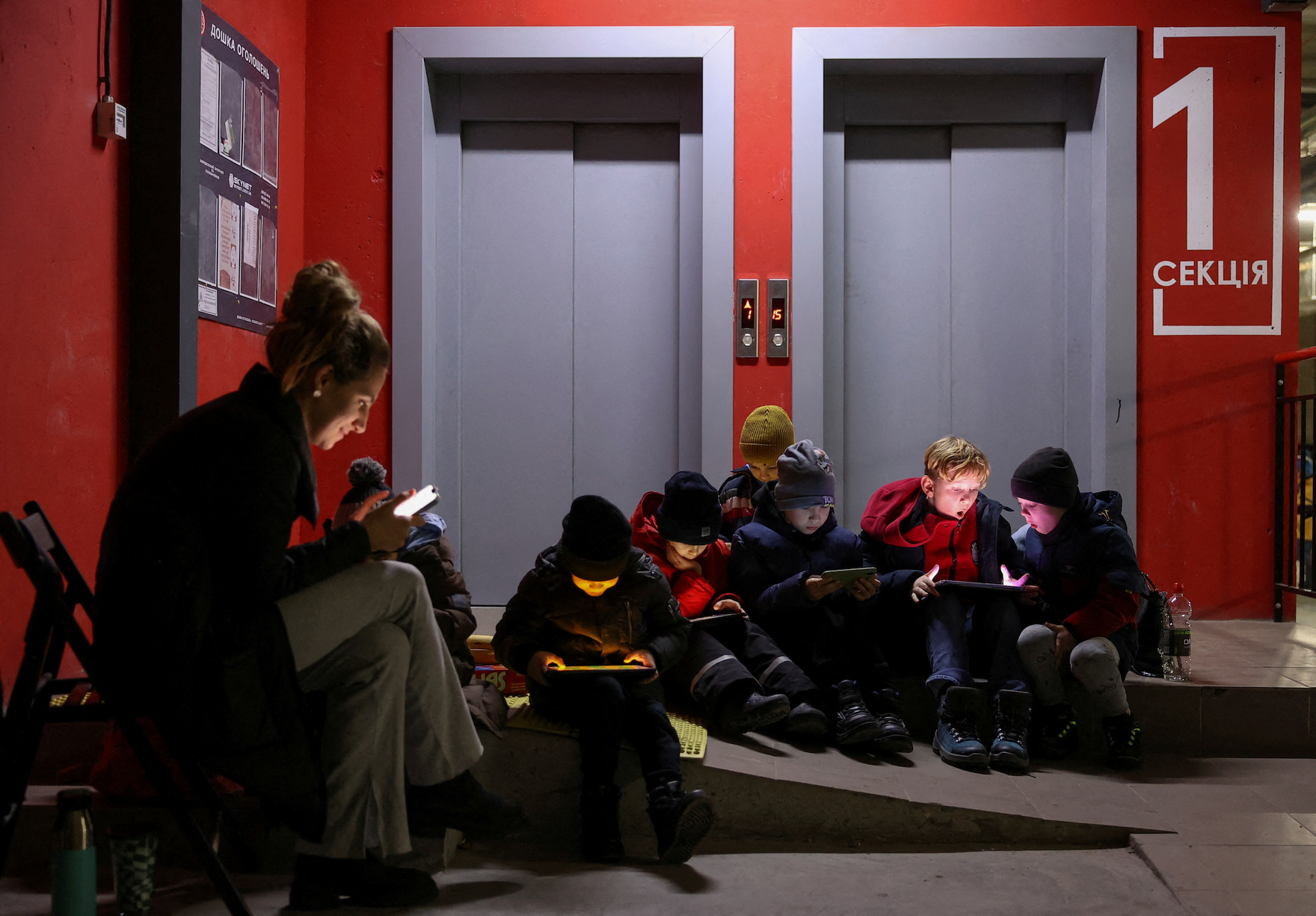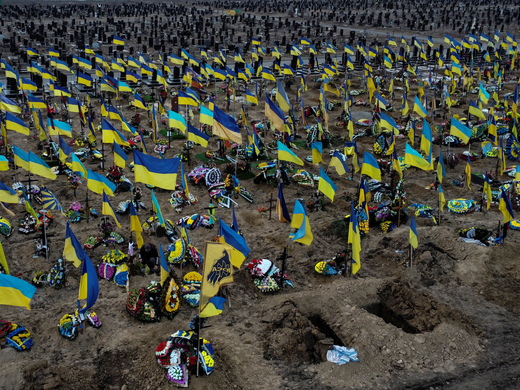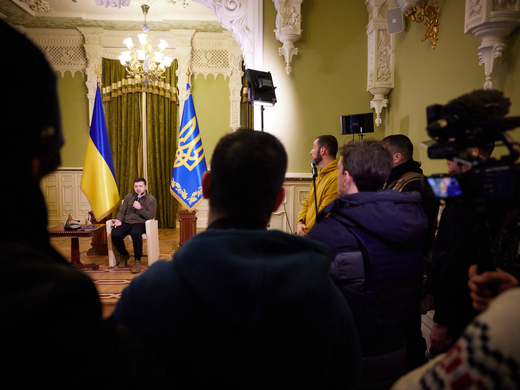It’s been five years since Ukrainians voted in national elections. Back in 2019, they selected Volodymyr Zelenskyy as their president, then picked a new Parliament a few months later — not knowing this would be their last election before the full-scale war.
The 2022 Russian invasion disrupted, among other things, the regular election cycle in the country. Ukrainians were supposed to vote for the president and Parliament again in 2024, but could not do so due to the war.
However — and this may come as a surprise to many in the West — this caused little controversy in the country. Most Ukrainians oppose having elections during the war, with security being the biggest concern.
Yet, even under martial law, Ukraine remains a democracy, as civil society pushes for more accountability and transparency from the state. For instance, when Ukrainian law makers tried to limit access to some open data, citing safety issues, Ukrainians demanded reopening of all the registries as well as continuous reporting on all public spending, to avoid corruption and mismanagement.
Similarly, citizens have been actively engaged in a dialogue with the government — pushing for different policies to be adopted, signing and advertising petitions, and publicly challenging law makers whenever they opposed their decisions.
Democracy in an App?
“The full-scale invasion means that we are lacking some of the democratic tools that would be normally available to the citizens in peaceful times,” says digital rights policy expert Maksym Dvorovyi. “But that doesn’t mean that democracy cannot go on. We just have to be more creative with it, using new tools to engage and influence the governance and policy making.”
Dvorovyi, who serves as a legal counsel with the Digital Security Lab Ukraine, adds: “What we’re seeing now is that whenever the government cannot reach the citizens in a traditional way, it’s using technology to make up for the lost connections. And the citizens respond. This is how the public gets to influence the policy makers, even if this influence is limited by the war.”
Dvorovyi is referring to state-controlled applications such as Diia, which means “action” in English. This app contains sensitive citizens’ data, such as their drivers’ licences, property documents and even passports. Ukrainians can request other docs through the app without the need to go to government offices.
Diia is the product of the Ministry of Digital Transformation of Ukraine, the sole aim of which is to digitize Ukraine’s democracy. The ministry emerged in 2019 as a new institution focused on using technology to make the government more transparent. It embarked on an ambitious goal of creating a “state in a smartphone” that would digitize all the government services and make them accessible through one app.
Under the ministry’s leadership, Ukrainians also gained visibility on government spending through open data registries, public procurement platforms and other digital tools. As a result, it became possible to investigate ownership of different companies, links between businesses and policy makers, and other connections that could hinder the good conduct of government.
The ministry’s biggest success has been Diia with its nearly 20 million users — roughly the entire adult population of Ukraine. Launched before the full-scale war, it allowed citizens to avoid everyday bureaucracy and visits to government offices. Instead, the app lets residents pay taxes, register companies, donate to charities and request assistance — which became increasingly relevant in 2022 after Russia’s full invasion.
“The big thing about Diia is making the government accessible,” says Anna Mysyshyn, CEO at Ukraine’s Institute of Innovative Governance. “That means reaching out to citizens who are in occupation, abroad, or who cannot access government services for other reasons. That could be due to disability, low mobility or anything else. But we need to keep in mind the people who are struggling with the digital tools, too, so as not to exclude them.”
Most Ukrainian adults are digitally savvy — three-quarters have high or above-average digital literacy, and
82 percent use the internet every day. However, simply requesting state services through a smartphone does not translate into direct democracy. The digitalization of services is still confusing for large portions of Ukraine’s population, and that confusion often corresponds to either age or education. The oldest and least educated residents have trouble using apps such as Diia, with little to no digital skills or knowledge of digital security.
Dialogue with the Government
Moreover, digitizing state services does not answer a fundamental question — about how citizens can communicate with the government. The Diia app did experiment with digital voting — for instance, by launching nationwide polls. In February, the government also used the app to select Ukraine’s representative for the 2024 Eurovision Song Contest, Europe’s biggest musical competition. The “trial election,” however, revealed problems with the application. As millions of users flocked to Diia to cast their vote, the app crashed, for several hours.
Democracy in a smartphone is a beautiful concept, but it cannot exist without democracy beyond the smartphone.
“Digital services are fragile and insecure, and you give up a lot of your privacy when you choose to use state-led applications,” Dvorovyi says. “So it may be convenient to have an app with the state data, and you can enjoy some feeling of a dialogue with the government, but in the end of the day, you have to accept the fact that this data can be hacked, and the app could crash.”
Dvorovyi is among those skeptical about Diia — as well as about other apps and tools aiming to digitize Ukraine’s democracy. For him, nothing beats the “real thing” — public, face-to-face dialogue between the government and the citizens. Diia, he believes, cannot replace democratic functions that have been limited by martial law. He argues that the state needs to think of other solutions.
“Democracy in a smartphone is a beautiful concept, but it cannot exist without democracy beyond the smartphone,” Mysyshyn agrees. “This means that technology can facilitate some of the communication between the state officials and the citizens, but it is the responsibility of the government to guarantee other means of democratic participation despite the war-related limitations.”
Mysyshyn says that “the Russian invasion is not an excuse to ignore citizens. Voters need to have leverages and tools to influence policy making, and they need data on what’s going on — especially when the stakes for Ukraine and its democracy are so high.”
Case in point: as mentioned above, at the outset of the full-scale war, Ukraine’s government decided to shut down open-data registries and no longer publish information on public procurement. This was done for security concerns: to hide sensitive data that could be used by the Russian army on the occupied territories, and to speed up the bureaucracy, such as when buying from abroad equipment needed in a war-affected country.
But these closures were met with universal criticisms from citizens — with claims that Ukraine needed more, not less, transparency during wartime. The government chose to reverse the restrictions after citizens voiced their disapproval through petitions and social media campaigns. And Ukrainians have used similar methods to change the government’s actions in other matters. For example, 25,000 Ukrainians signed a petition for a dismissal of the minister of culture, Oleksandr Tkachenko. Widely supported by media makers, writers and other artists, among others, the petition received a response from President Zelenskyy, who replaced the minister.
While it is still up to the government to decide whether to accede to demands from an online petition, this tool remains at the citizens’ disposal — and is being actively used. In 2023, Ukrainians registered more than
6,000 petitions, with subjects ranging from renaming city streets to introducing reforms in different sectors. Petitions work on the local level, too, targeting regional officials across Ukraine.
The Ukrainian government currently has limited access to millions of its citizens — both the refugees who fled their homes to the West, and those living under temporary Russian occupation. Under these conditions, digital tools are the next best thing to some of the “peacetime” democratic tools. Despite the limits of state apps, the country has few alternatives to keep its democracy afloat. Ukrainian leaders should consider expanding digital capacity as the war goes on. If no conventional election is possible, a digital election may make sense.



